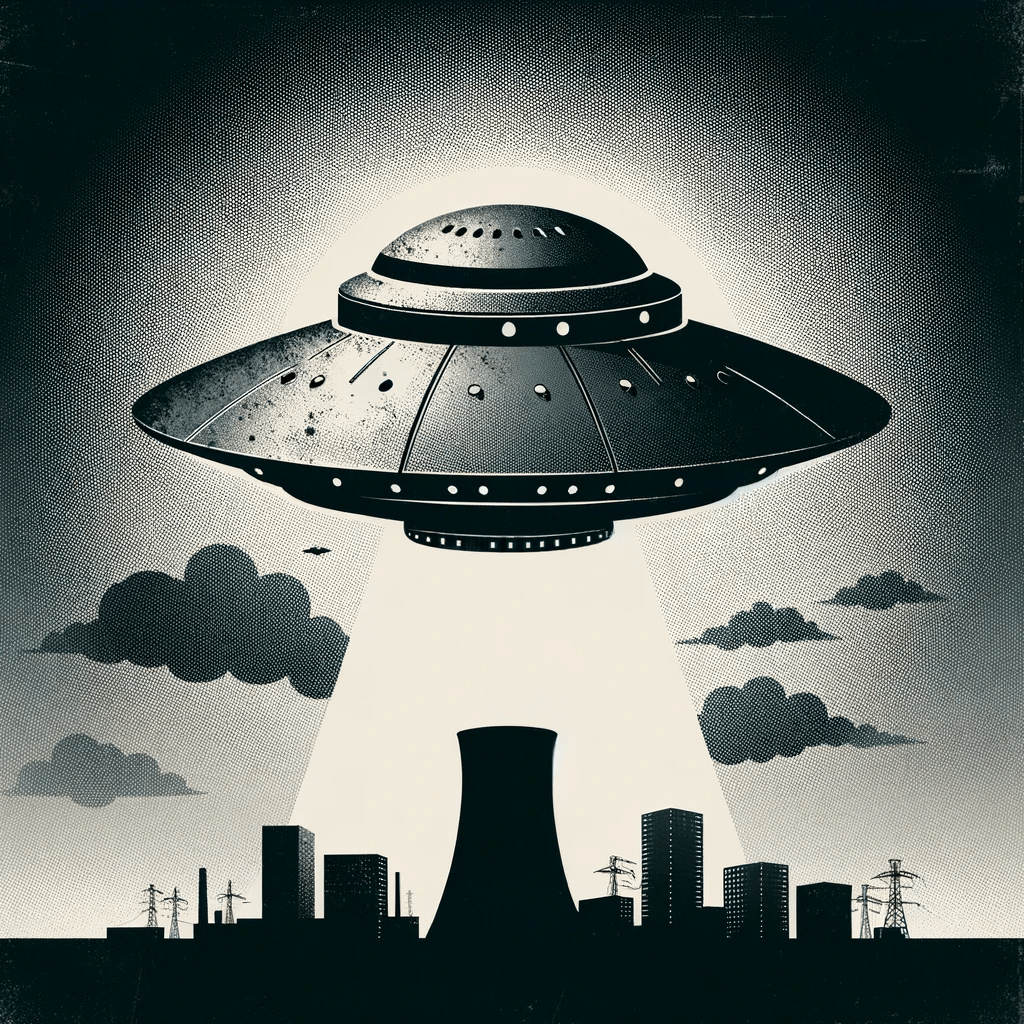Fukushima UFO Incident (2011)

The Fukushima UFO incident refers to a sighting of an Unidentified Flying Object (UFO) in the sky above the Fukushima Daiichi Nuclear Power Plant in Japan in 2011, just after a catastrophic earthquake and tsunami had hit the region. The incident occurred on March 26th, 2011, and was witnessed by multiple people, including plant workers and journalists who were covering the disaster. The UFO was described as a metallic, disc-shaped object that hovered in the sky for several hours before suddenly disappearing. The incident has sparked speculation and debate within the UFO community and among skeptics about the nature and origin of the object.
Unique Facts:
- The Fukushima UFO incident was reported on by various news outlets, including The Huffington Post and The Independent. The Huffington Post cited an article in the Japanese magazine Flash, which reported that the UFO had been seen by multiple witnesses, including plant workers and journalists who were covering the disaster. (Source: The Huffington Post)
- The incident was investigated by the Mutual UFO Network (MUFON), a nonprofit organization that investigates UFO sightings. According to MUFON, multiple witnesses reported seeing a metallic, disc-shaped object in the sky above the Fukushima Daiichi Nuclear Power Plant. (Source: MUFON)
- The Fukushima UFO incident is considered by some to be a potential example of a UAP (Unidentified Aerial Phenomenon) that is associated with nuclear facilities. Some researchers have suggested that these types of sightings may be indicative of interest by extraterrestrial civilizations in nuclear technology. (Source: Forbes)
MUFON investigated the incident and reported multiple witnesses who saw a metallic, disc-shaped object in the sky above the Fukushima Daiichi Nuclear Power Plant.
The Fukushima Daiichi Nuclear Power Plant is a nuclear power plant located in the Fukushima Prefecture of Japan. The plant was commissioned in 1971 and was operated by the Tokyo Electric Power Company (TEPCO). On March 11, 2011, a magnitude 9.0 earthquake and subsequent tsunami struck the region, causing damage to the power plant and leading to a nuclear disaster.
The disaster resulted in the release of radioactive materials into the surrounding environment and the evacuation of nearby communities. The Japanese government declared a state of emergency and instituted a 20-kilometer exclusion zone around the plant. The disaster was rated a level 7 on the International Nuclear Event Scale, which is the highest rating and denotes a major accident with widespread health and environmental effects.
The disaster at the Fukushima Daiichi Nuclear Power Plant is considered to be one of the worst nuclear accidents in history, alongside the Chernobyl disaster of 1986. It has led to increased scrutiny and debate about the safety and viability of nuclear power, as well as efforts to improve disaster preparedness and response.
Since the disaster, TEPCO has been working to contain and clean up the site, including the removal of radioactive materials and the decommissioning of the damaged reactors. The cleanup efforts have been complicated by ongoing issues with radiation levels and water contamination, and have faced criticism for delays and lack of transparency.
The Fukushima Daiichi Nuclear Power Plant disaster has had a significant impact on Japan and the global nuclear industry. It has led to increased awareness of the potential dangers of nuclear power and the need for improved safety measures, as well as renewed debates about the role of nuclear power in the transition to a more sustainable energy future.


